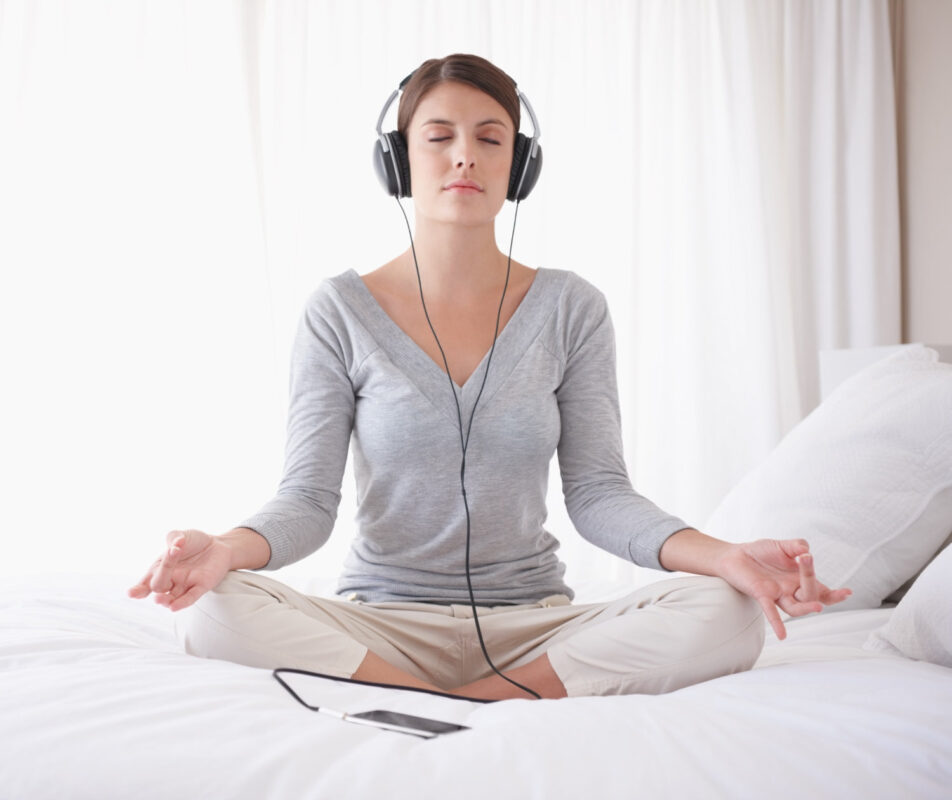

Enlightened Audio Education
Lesson 13
The path to high quality meditation and hypnosis recordings
Over the next few lessons, you will become familiar with all the equipment needed for you to record yourself, and most importantly, how to use it properly.
If you have chosen to take care of your recording at a professional studio, then you can skip this lesson altogether. If you are keen to handle all the recording tasks yourself, and if you wish to achieve a high-quality result, then this is essential reading.
But before we dive into the “how to”, let’s take a moment to consider one of the most interesting challenges you are about to face…

How do we define “Quality”?
In an earlier lesson I made a big song and dance about the importance of achieving a high-quality standard in your recordings. This is something I am really motivated to help you achieve and now is the time for us to revisit that subject again. Why? Because if you go down the path of recording yourself, as opposed to recording in a professional studio, then the quality of your recording depends on you and you alone.
Feeling a little intimidated? Don’t be. The difference between a poor-quality recording and a high-quality one comes down to just a few key techniques, all of which you will easily master.
However…
How will you know when you have achieved a quality result? More to the point, how do we define “quality”? After all, you can’t measure sound quality in kilograms or inches or decibels!
The best way to ensure that you achieve a quality recording is to familiarise yourself with the sound of both good quality and bad quality recordings. To help you with this I have created a special training video called “Tuning in to Sound Quality”. In this short video you will hear me narrate a series of short spoken word performances, each one of which has a quality problem of some sort. Your task is to listen carefully to see if you can hear these quality problems.
“Tuning in to Sound Quality” will help you to recognise what a well-balanced, high-quality recording sounds like, and it will also teach you how to recognise errors that might otherwise have slipped past your attention. In this way it will give you the confidence to produce your own recordings to a very high standard without the help of a professional audio engineer. It’s a one-of-a-kind training tool that I hope you will take full advantage of.
Perfection – don’t chase it too hard!
It’s very important to remember that a “perfect” recording is rarely achieved, even in the best studios. With that in mind, “Tuning in to Sound Quality” will help to save you from a potential irritant – chasing after perfection and getting hung up on tiny errors that are actually quite passable. Knowing when to say “this is good enough” will save you from wasting time, but you will only have the confidence to make that call when you are familiar with the sound of passable and unpassable material.
I should mention that in order for you to take full advantage of this training video, you will need some decent quality speakers or headphones. More on that in just a moment.
It is my hope that you’ll take this opportunity to enjoy this training video. Hey, I wasn’t joking when I said that I was really motivated to help you improve the quality of your recordings. I could write and write all day about sound quality and how to recognise problems in your recordings, but nothing beats hearing them for yourself. So take a few minutes to train your ears so that you’ll know what constitutes a good quality recording. Do this and you’ll put yourself miles ahead of the average D.I.Y recording artist.
Is there ever a time to compromise on quality?
Helping people improve the quality of their recordings is one of the reasons why I chose to create these lessons. But I must acknowledge that you are under no obligation to meet any particular quality standard with your recording. You are an independent artist, and you are free to decide what constitutes an acceptable level of quality in your own work. This varies greatly from person to person, and from project to project.
Let me give you some examples.
Right now, I’m listening to a series of recordings that have been produced by one of the biggest names in the self-help industry. Her recordings are simply podcasts that have been bundled together into a product of substantial value (hundreds of dollars). In my opinion she used a substandard microphone to capture her recordings and she employed poor microphone technique (resulting in constant clunking sounds and quite a bit of distortion throughout). I personally would have felt uncomfortable about publishing audio of this quality, but I must acknowledge that, quality aside, the content of her recordings is really fantastic.
And content quality is more important than sound quality.
So, despite the shoddy sound, I feel blessed to be enjoying the wonderful recordings that this inspirational woman has made available to me.
There are also times when sound quality, for practical reasons, is simply not a high priority. For example, some hypnotherapists like to record the live hypnosis sessions that they perform with their patients. These recordings can then be given to the patient to take home so they can repeat the experience at a later time. When recording in a clinical environment with a patient in the room, an entirely different mindset prevails in comparison to a professional studio recording or a client-free recording in your own home. You’ll be far more focussed on your patient’s immediate needs than you will be on the recording equipment you’re using or the acoustics of the room you’re in. You’ll have little control over the intrusion of environmental sounds, and you’ll have limited editing options once the recording is complete. As a result, “studio quality” recordings in live clinical settings can be both difficult to achieve and, one could argue, careless to pursue.
Because patient care is more important than sound quality.
At the end of the day, the most important thing is that you get your recording done so that it can help people. A recording with a few flaws might preclude you from large-scale publishing opportunities (for example, being signed to a record label that promotes you), and it might turn off a small percentage of prospective customers, but it’s certainly not going to result in total failure. Not by a long shot.
In any case, by taking advantage of the tips in this course you can look forward to achieving a high-quality standard that, even if imperfect, is going to find favour with just about everyone, including fusspots like me.




